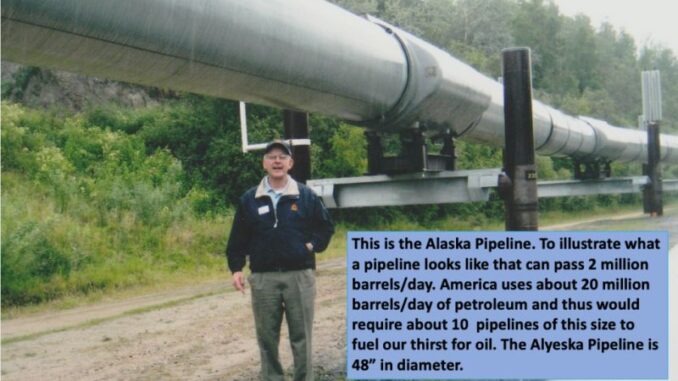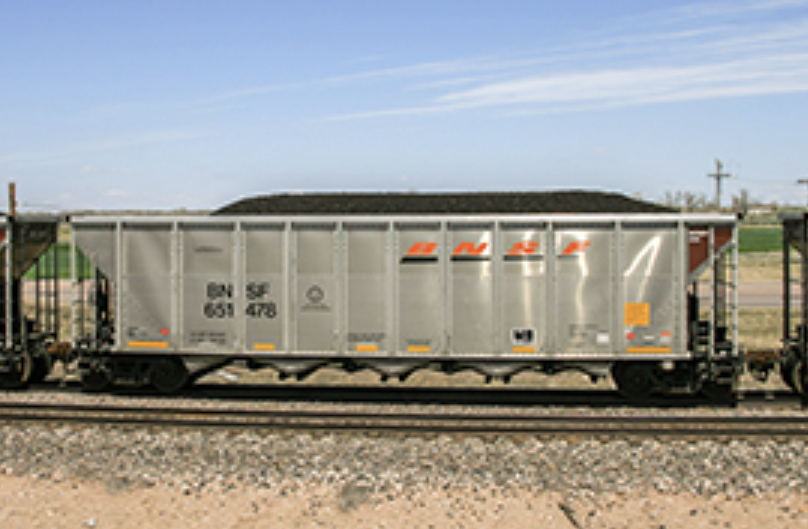
Conventional energy is vitally important for all that we do. Missing from news reports to the general public is an honest communication to try to explain the huge and enormous energy systems that we depend on each day and the impossibility of replacing conventional energy with wind and solar. To start 2024, I thought I would post a series on the Hard Truths of Energy. I borrowed the title from the 2007 National Petroleum Council report, led by Chairman, Lee Raymond, retired CEO of ExxonMobil. Petroleum, natural gas and coal were important in 2007 and they remain important today. The “Energy Density” of fossil fuels makes them indispensable to sustain our economy and our high quality of life.(4)
Fossil Fuels Provide 79% of U.S. Primary Energy
79 Quadrillion BTUs is the amount of energy we depend on from fossil fuels. This is my attempt to try to explain and illustrate what 79 Quadrillion BTUs of energy looks like. The number 79 Quadrillion is from the Department of Energy’s Lawrence Livermore Laboratory for energy use in 2022.(2) Below is a short summary of the amount of natural gas, petroleum and coal that we used in the U.S.A. in 2022.
How Huge is a Quadrillion?
I have discussed the steady U.S. energy demand of 100 Quadrillion BTUs per annum for decades and yes, 100 Quadrillion BTUs is the amount of energy we use each year and it has been steady for over 20 years.(6) Until now, I did not take the time to explain the enormity of a Quadrillion BTUs. Here is what one Quadrillion BTUs of energy is equivalent to:
Coal= About 50 million tons of coal. This would be a coal pile that would be one mile wide, ten feet high and 3.3 miles long.
Oil= 7.14 Billion gallons. See Lee Raymond quote below on the quantity of motor fuels used in the U.S. in a year
Natural Gas= 1 Trillion cubic feet. This is equivalent to 200 aircraft carrier sized LNG Tankers. More on the enormity of an LNG ship below.
It is a fact, in America, we use and need about 100 Quadrillion BTUs of energy each year.
36 Quadrillion BTUs of Petroleum
The single largest form of energy that we depend on is petroleum. About 20 million barrels per day. To visualize what 20 million barrels per day would look like, take a look at the photo of me and the 48″ Alyeska pipeline in Alaska. At its peak flow, about 2 million barrels per day flowed through the Alaska pipeline. So, to visualize 20 million barrels per day, picture in your mind, ten of these 48″ pipelines installed side by side.

Another illustration was offered by Lee Raymond, retired CEO of ExxonMobil when introducing the National Petroleum Council report “Facing the Hard Truths of Energy” in 2007. This explanation is offered by Mr. Raymond on You Tube, here. Mr. Raymond explained that the amount of motor fuels used in 2006 was about 150 Billion gallons. He then went on to state that if each gallon was placed in a one gallon tin can as he used in his youth to fill his lawnmower, the length of 10″ high cans, if placed end to end would circle the earth 1,000 times. That is the enormity of 150 Billion gallons of motor fuel. Mr. Raymond stated, (among other important points), “To replace current energy systems it will take a an enormous effort and a long period of Time.”(5)
The gasoline and Diesel motor fuels used in the U.S. has increased from the 150 Billion gallons consumed in 2007, to about 209 Billion gallons in 2022.
33 Quadrillion BTUs of Natural Gas
America used 33.4 Quadrillion BTUs of natural gas during 2022. Most of the natural gas used by the U.S. is distributed by a vast network of unseen, underground pipelines. Therefore, hard to visualize. So, let’s imagine that if we were to use all of our natural gas from shipments of LNG, (Liquified Natural Gas) how many huge LNG Super Tankers would it take? Such as the vessel Pan American shown below:

This LNG tanker holds 174,000 cubic feet of liquified natural gas. LNG is 1/600th the volume of the gaseous state. The ship is over 977 feet long and the gross tonnage is 114,966. This is a ship about the size of a U.S. Navy aircraft carrier. The energy equivalent of the cargo is about 6 trillion BTUs.
Now, imagine 6,600 ships like the Pan American above all lined up along the east coast. If the ships were placed touching, end to end, this would be about 1,220 miles of ships from New York City to south of Miami, Florida. That is the number of aircraft carrier sized LNG tankers that it would take to provide 33 Quadrillion BTUs of natural gas fuel. The 33 Quadrillion number is from 2022, the actual demand. The future will likely require more than 33.4 Quadrillion BTUs.
10 Quadrillion BTUs of Coal Power
Coal power has been important to the U.S. since the days of Thomas Edison, Nikola Tesla and George Westinghouse. The American electric system, referred to as the “Grid” was built on the foundation of reliable, affordable, domestically supplied and environmentally clean steam power generation fueled by coal. This took over 125 years to build and has been described by the Smithsonian as, “The Largest Machine Ever Built”. Video here. As recent as 2011 about 50% of America’s electricity was produced by steam turbines with steam generation from coal fuel. In 2022 the coal powered electricity generation dropped to about 20%. Much of the total electricity generation which was once powered by coal fuel, has been switched to natural gas fuel.
As recent as 2011 America used about a billion tons of coal. In 2022 coal use declined by about 50% to about 512,000 million tons. Coal is important because of it’s enormous energy density. Another important fact, is that weeks and months of primary energy can be safely stored on site. Coal provides Dispatchable power and it is proven to be affordable. America has the largest coal reserves of any country. The U.S. is the Saudi Arabia of coal.
How much coal is 512,000 million tons? This is enough coal to fill about 5,000,000 coal cars such as the one shown below.

https://www.bnsf.com/ship-with-bnsf/ways-of-shipping/equipment/coal-cars.html
How long would a single train of 512,000,000 tons of coal be? About 50,000 miles, long enough to circle the earth two times at the equator.
Conclusions
The so-called energy transition from conventional to wind and solar is simply not possible with today’s technology. As Mr. Raymond stated in 2007, changing from our conventional energy systems to something else is an enormous effort that will take. a long time.
Net-Zero Carbon by 2050 is impossible. A previous blog post is here.
The largest energy density and provider of the greatest quantity of carbon-free energy is nuclear power. However, replacing the existing electric generation with nuclear will take decades to accomplish and massive roll back of Federal Regulations. It took about 40 years to develop, manufacture, construct and perfect the 93 operating commercial nuclear units in 54 plants. These currently provide about 20% of America’s electricity. Most of these are now over 30 years old and the last two units built by Southern Company (2,200MW capacity) took over ten years to build. A previous blog post discusses “Without New Thinking on Nuclear Power, Net Zero Carbon is Impossible”, here.
Electrifying Everything is not possible, even electrifying transportation is not practical for every vehicle and if they were, much more electricity would be required.
The so-called energy transition from conventional forms of energy to wind and solar is impossible and attempting to do so by forced laws (such as the IRA), increased Regulations and the continuing war on carbon will destroy our country.
It is my hope and prayer that after the next election some sanity to energy policy will return.



